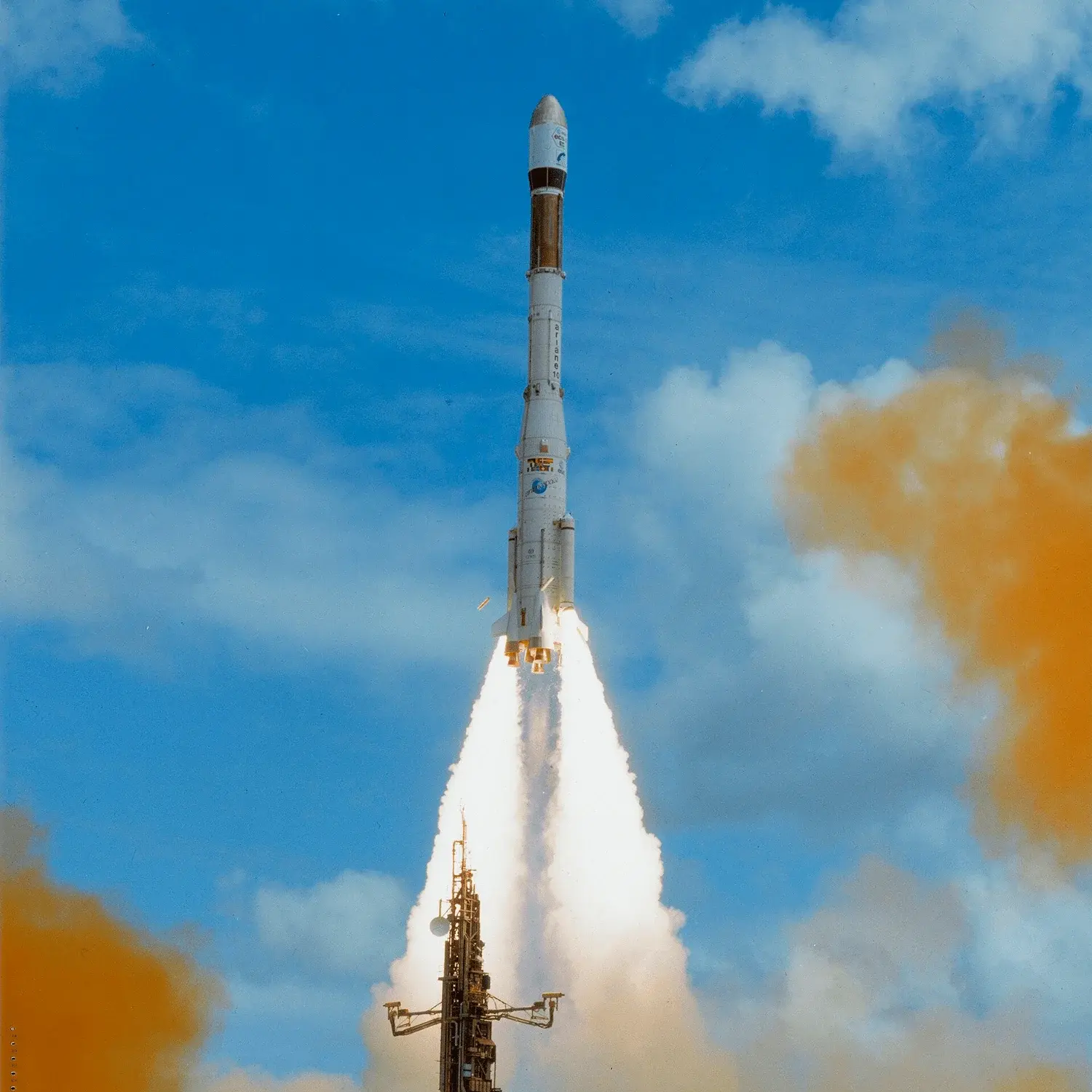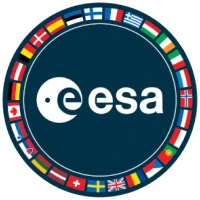Aussat-A3, Eutelsat 1-F4
Launch Success
Liftoff Time (GMT)
00:45:00
Wednesday September 16, 1987
Mission Details
Launch Notes
Flight V19.
Eutelsat-1 F4
The European Telecommunications Satellite Organization (Eutelsat) has been servicing the European community since 1977, being formally established by a multi-lateral agreement in 1985. In 1979 ESA agreed to design, build, and launch five ECS (European Communication Satellite) spacecraft to be assumed by Eutelsat after passing initial on-orbiting testing. At that time the name of each spacecraft was changed to Eutelsat 1-F1, Eutelsat1-F2, etc. Of the five ECS spacecraft, four were successfully launched (1983, 1984, 1987, and 1988) and transferred to Eutelsat. ECS 3 was lost in an Ariane-3 launch accident in 1985. As noted previously, the ECS spacecraft was derived from the OTS vehicle but with an initial mass on station of approximately 700 kg. The payload included twelve (including two spares) 14/11 GHz transponders with 20 W output power for a capacity of 12,000 telephone circuits or 10 television channels. Two solar arrays with a span of 13.8 m provided 1 kW of electrical power to the 2.2 m by 2.4 m spacecraft bus. With an anticipated working life of up to seven years, at the end of 1994 three ECS/Eutelsat 1 spacecraft were still operational at 21.5 degrees E, 25.5 degrees E, and 48 degrees E, although Eutelsat 1-F1 offered limited service due to its inclination of more than 4.5 degrees. Eutelsat 1F2 (ECS 2) was retired in December 1993.
Geostationary Transfer Orbit
1 Payload
1,158 kilograms
Aussat-A3
Australia's national satellite company, AUSSAT Proprietary Ltd., in May 1982 selected Hughes Communications International, a wholly-owned subsidiary of Hughes Aircraft Company, to develop the country's first satellite program. Under the contract, Hughes Space and Communications Group (SCG) has built three satellites and two Telemetry, Tracking, Command, and Monitoring (TTC&M) stations. Also provided are launch and operational services and ground support. The spin-stabilized HS-376, an established communications satellite design, was chosen for Aussat. The first two Australian satellites were launched on the Shuttle in August and November 1985. The third was launched in September 1987 on the Ariane-3 rocket. Aussat uses two telescoping cylindrical solar panels and a folding antenna for compactness during launch. After the satellite nears its orbital position, the antenna erects and the outer solar panel deploys, exposing the inner solar array. Aussat's dual-polarized, three-reflector antenna system provides seven transmit beams and three receive beams. Five transmit beams are spot beams and serve the Homestead and Community Broadcasting Satellite Service (HACBSS): four contiguously placed over the western, central, northeast, and southeast regions of the Australian continent and one over Papua New Guinea. The other two are national beams, which use orthogonal polarizations to provide continental coverage for Fixed Satellite Service (FSS).
Geostationary Transfer Orbit
1 Payload
1,250 kilograms
Launch Site
Stats
Ariane 3
7th
Mission
1st
Mission of 1987
European Space Agency
11th
Mission
1st
Mission of 1987
1987
82nd
Orbital launch attempt

